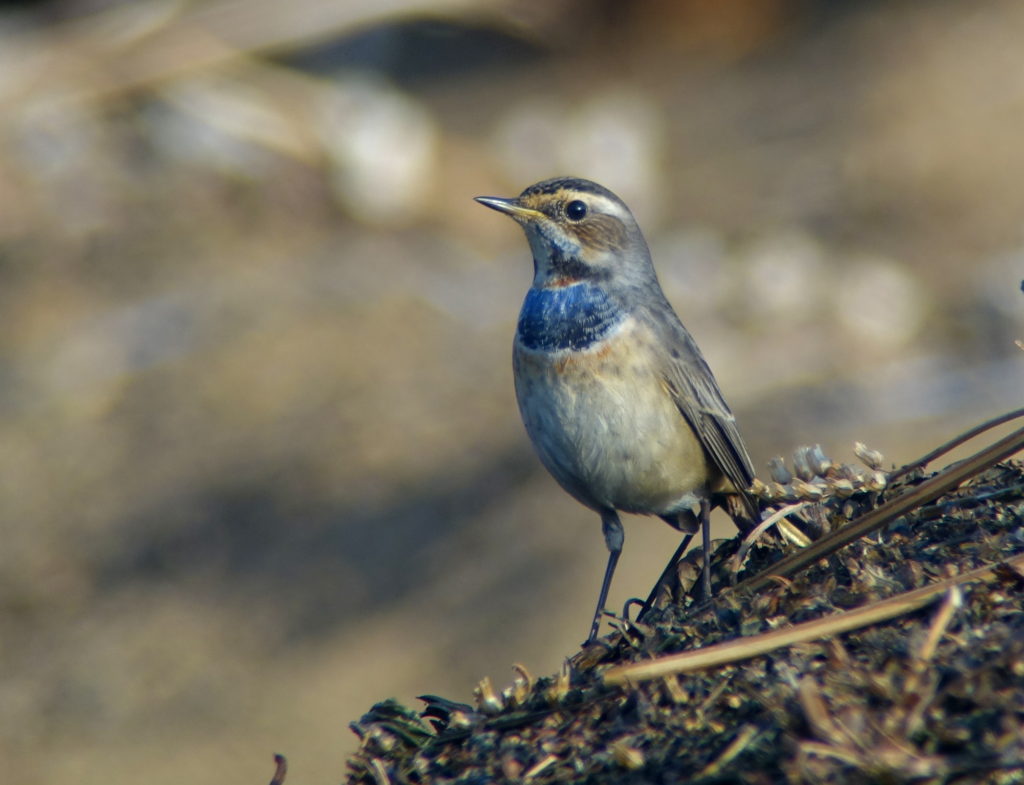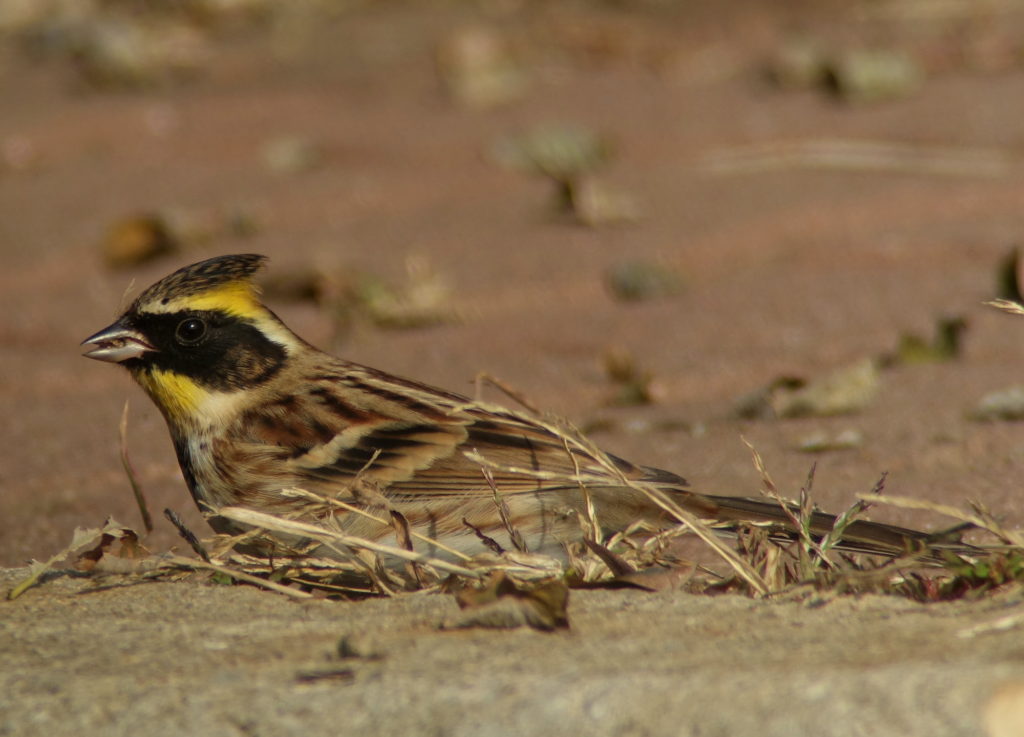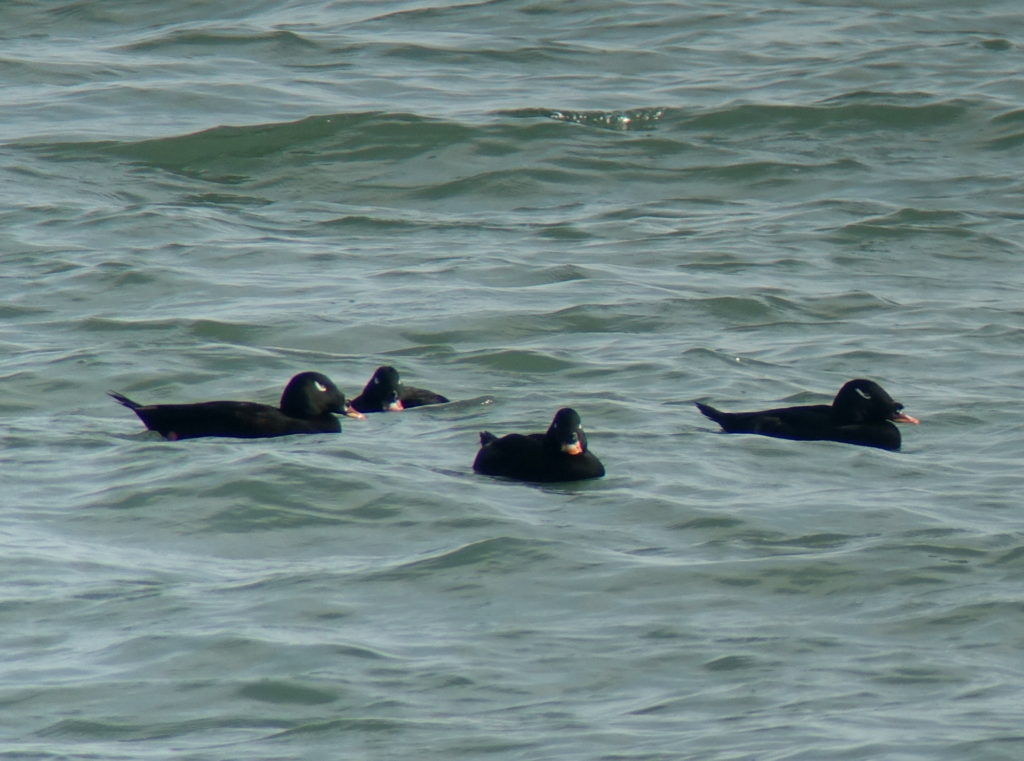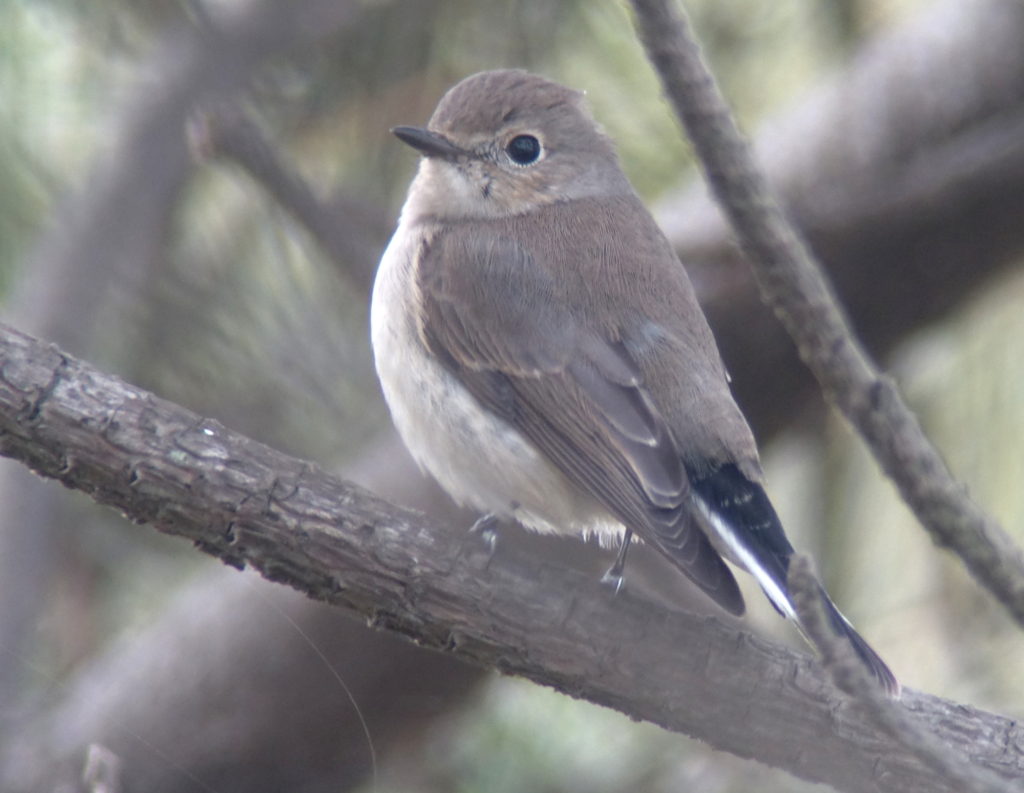Bird News from Nial Moores, with Luca Ferretti (18-20)
An extraordinary few days with exceptionally high counts of some species and several frustratingly camera-shy major highlights including 1-2 presumed Two-barred Crossbill on 20th; a Spotted Nutcracker on 21st; and an adult male Bearded Reedling on 22nd and 23rd. All demonstrate once more the value of this island for bird research and its potential for birdwatching-based ecotourism and also the need for conservation activities now being proposed by Birds Korea and partners (see later posts),
On 18th, 98 species were logged including an adult Lesser White-fronted Goose (first Baekryeong record of this globally Vulnerable species?) , a Baikal Teal, a Second Calendar-year Greater Spotted Eagle (the third individual this month of this globally Vulnerable species), an Eastern Marsh Harrier, a Little Owl, a minimum 90 Yellow-bellied Tit (far exceeding the previous presumed national high day count of 65 recorded last year), 3,000 Brambling, six Red Crossbill and a Pine Bunting.
 Lesser White-fronted Goose Anser erythropus (centre) with Eastern Spot-billed Duck Anas zonorhyncha (left), Eurasian Teal Anas crecca and Tundra Bean Goose Anser serrirostris © Nial Moores
Lesser White-fronted Goose Anser erythropus (centre) with Eastern Spot-billed Duck Anas zonorhyncha (left), Eurasian Teal Anas crecca and Tundra Bean Goose Anser serrirostris © Nial Moores
On 19th, 97 species were logged including 252+ Stejneger’s Scoter (alternatively known as “Siberian” or “Asian White-winged Scoter”) and the first returning six American Scoter, a Water Rail sp. heard, 2-3 Amur Falcon (associating with a juvenile Eurasian Hobby with string or wire attached to both feet), 1-2 Hume’s Leaf Warbler, two Bluethroat and 1-2 male Yellow-breasted Bunting (the only individuals of this once common but now Endangered species found on the island this month) .
 Bluethroat Luscinia svecica © Nial Moores
Bluethroat Luscinia svecica © Nial Moores
 Amur Falcon Falco amurensis © Nial Moores
Amur Falcon Falco amurensis © Nial Moores
 Eurasian Hobby Falco subbuteo © Nial Moores
Eurasian Hobby Falco subbuteo © Nial Moores
On 20th, an early visit to Dumujin found large numbers of birds departing with the highlights there 9-14 Alpine Accentor (with birds circling overhead and dropping down onto the cliffs out of view before departing once more), >1,000 Brambling, and 90 Red and one or two presumed Two-barred Crossbills (only seen in flight, when showed obvious white wing-bars); with the 1 CY Greater Spotted Eagle found roosting high up on a forested ridge. Other highlights included a Baillon’s Crake seen in flight at Yeonhwa Ri; and the long-staying (and globally Endangered) Far Eastern Curlew in Jincheon. The day finished with an injured Watercock found and rescued by two islanders.
 Greater Spotted Eagle Clanga clanga © Nial Moores
Greater Spotted Eagle Clanga clanga © Nial Moores
 Far Eastern Curlew Numenius madagascariensis © Nial Moores
Far Eastern Curlew Numenius madagascariensis © Nial Moores
 Watercock Gallicrex cinerea © Nial Moores
Watercock Gallicrex cinerea © Nial Moores
On 21st, five outstanding hours of “Viz-migging” from dawn, counting departing migrants at Dumujin, followed by an active search for birds at Yeonhwari produced some really great records. Most numerous species for the day – almost all of which were logged departing the island – included 12,500 Brambling, 508 Red Crossbill, 310 Eurasian Siskin, 219 Eastern Great Tit, 218 Coal Tit, 150+Yellow-throated Bunting, 106 Yellow-bellied Tit and 95 Hawfinch. These numbers were enough in themselves – but additional highlights heading out to sea included a White-tailed Eagle, eight Crested Honey Buzzard, and two globally Endangered Oriental Stork (for a while spiraling with the 1CY Greater Spotted Eagle)- with the best of all in the Korean context a Spotted Nutcracker watched coming in from the west before dropping into forest. There are very few records in Korea of this species away from known breeding areas. Is this species also irrupting this year?

 Oriental Storks Ciconia boyciana above the headland at Dumujin © Nial Moores
Oriental Storks Ciconia boyciana above the headland at Dumujin © Nial Moores
On 22nd, the day was spent in Jincheon where species of note included two Ruddy Shelduck, three Chinese Grosbeak (very scarce on the island this October), 40+ Hawfinch, 4+ Pine Bunting and best of all a stunning adult male Bearded Reedling (perhaps the third national record, with the last on Heuksan Island in early May 2006). Although I saw this handsome moustached bird no less than six times during the day, including once in the scope, I was too slow to document the bird with anything more than some sound recordings.
 Hawfinch Coccothraustes coccothraustes © Nial Moores
Hawfinch Coccothraustes coccothraustes © Nial Moores
 Chinese Grosbeak Eophona migratoria © Nial Moores
Chinese Grosbeak Eophona migratoria © Nial Moores
Also in and close to the small reed-bed in Jincheon were good numbers of buntings, including single Little, 15-20 globally Vulnerable Rustic and 30+ Yellow-throated Buntings, and an odd-looking “mystery bird” which appears to be a best-fit for a Common Rosefinch with exceptionally worn plumage.
 Rustic Bunting Emberiza rustica © Nial Moores
Rustic Bunting Emberiza rustica © Nial Moores

 Male (top) and female Yellow-throated Buntings Emberiza elegans © Nial Moores
Male (top) and female Yellow-throated Buntings Emberiza elegans © Nial Moores
 Presumed Common Rosefinch Carpodacus erythrinus © Nial Moores
Presumed Common Rosefinch Carpodacus erythrinus © Nial Moores
On 23rd, following a striking sunrise over the Hwanghaenam coast of the DPRK, 81 species were logged in the east of the island, including the Bearded Reedling again – which was watched avoiding both a Bull-headed Shrike and my camera by alternately creeping through undergrowth in the reed-bed before jumping from one reed top to another.
 Sunrise over Hwanghaenam © Nial Moores
Sunrise over Hwanghaenam © Nial Moores
Additional species of note included 15 American Scoters (almost all males, including a leucistic bird, first seen last year ) and now 309 Stejneger’s, including c.300 adult males showing a tremendous variation in head and bill shape – presumably with the most horned and big-headed birds being the oldest (a few of which were paired up, while others were engaged in what appeared to be silent head throws and standing up in the water).
 American Scoter Melanitta americana © Nial Moores
American Scoter Melanitta americana © Nial Moores


 Recently split Stejneger’s Scoters Melanitta stejnegeri, with female (left) and male in top image © Nial Moores
Recently split Stejneger’s Scoters Melanitta stejnegeri, with female (left) and male in top image © Nial Moores
Other species of note during the day included a Little Owl heard at 2 AM on the motel roof; large numbers of Eastern Great (300+) and Coal Tits (200+), including several high-flying flocks; single Red-billed and at least 11 Common Starlings; 40+ Dusky Thrush; single Taiga Flycatcher; 1,500 Brambling; 60 Red Crossbill; twelve species of bunting, with Yellow-throated now most numerous followed by Rustic Bunting; and the personal first Lapland Longspur of the autumn – the 161st species found on the island between October 11th and 23rd this year out of a total of c. 320 known to have been recorded here in the last five years.
 Taiga Flycatcher Ficedula albicilla © Nial Moores
Taiga Flycatcher Ficedula albicilla © Nial Moores
All images taken with a handheld Sony camera and all but one through a truly superb Swarovski scope…

